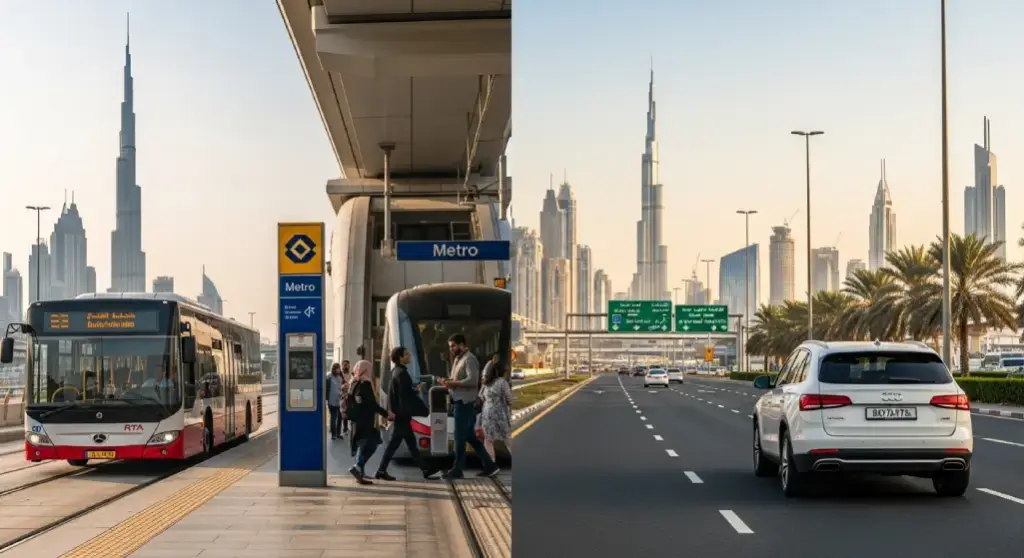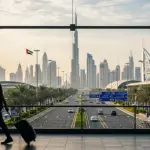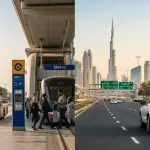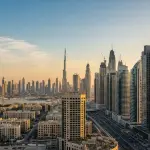Moving to or living in Dubai brings many lifestyle choices, but one of the most important is how you’ll get around. The city’s world-class public transport system continues to grow every year, yet car ownership remains deeply popular. Each option carries its own advantages, costs, and conveniences. This detailed guide compares both sides to help you decide which suits your lifestyle, budget, and routine best.
Understanding Public Transport in Dubai
Dubai has invested heavily in creating one of the cleanest and most efficient transport networks in the region. The Roads and Transport Authority (RTA) operates an integrated system that includes the Dubai Metro, buses, trams, taxis, marine transport, and ride-sharing services. For many residents and newcomers, this system can cover most of their daily travel needs.
1. The Dubai Metro
The Dubai Metro is the backbone of public transportation. It connects major business districts, residential communities, and landmarks such as Dubai Marina, Downtown, and the airport. The trains are air-conditioned, punctual, and operate every few minutes during peak hours. For anyone living near a metro station, daily commuting can be extremely convenient and cost-effective.
2. Buses and Trams
Buses reach deeper into residential and industrial areas not covered by the Metro, including Al Nahda, Deira, and parts of Al Quoz. The Dubai Tram links the Marina and Jumeirah Beach areas, offering a comfortable and scenic ride, especially for short commutes or weekend travel.
3. Costs and Payment
All public transport in Dubai uses the Nol card, a rechargeable smart card that makes travelling simple. Fares depend on the number of zones you cross, starting from just a few dirhams for short trips. Frequent commuters can opt for monthly passes that keep expenses predictable and manageable.
4. Convenience and Comfort
Public transport is modern, clean, and fully air-conditioned — an essential feature in Dubai’s climate. Most stations are equipped with lifts, escalators, and security staff. Women and children have dedicated metro cabins, making travel safer and more comfortable for families.
Advantages of Public Transport
- Lower Cost – The overall monthly expense is significantly cheaper than owning a car. There are no maintenance costs, insurance payments, or fuel bills.
- Eco-Friendly Option – Using public transport reduces carbon emissions and supports Dubai’s sustainability goals.
- No Parking or Toll Worries – With public transport, you never need to pay for parking or pass through toll gates like Salik.
- Stress-Free Commuting – You can use your travel time productively by reading, listening to music, or even working remotely.
- Reliable Connectivity – The Metro and buses operate on fixed schedules with digital real-time tracking through the RTA app.
Drawbacks of Public Transport
- Limited Coverage in Some Areas – While the Metro and buses reach most districts, newer residential communities on the outskirts still rely on taxis or private vehicles.
- Time Consumption – Multiple transfers can make journeys longer compared to driving directly.
- Fixed Timings – Public transport doesn’t operate 24 hours everywhere. Late-night commutes or early-morning flights may require alternate transport.
- Peak-Hour Crowds – During rush hours, especially between 7–9 AM and 5–7 PM, metro cabins can become crowded.
- Flexibility – If you often travel outside Dubai or need to carry heavy items, relying solely on public transport may not always be practical.
The Reality of Car Ownership in Dubai
For many residents, owning a car represents independence and comfort. With excellent road infrastructure, wide highways, and affordable fuel, driving in Dubai can be an enjoyable experience. However, it also comes with a long list of hidden costs.
1. Buying a Car
You can purchase either a new or used vehicle, depending on your budget. Prices vary widely — from economical compact cars starting around AED 40,000 to high-end luxury models that exceed AED 200,000. If you take a loan, factor in interest payments and insurance costs.
2. Registration and Insurance
Every car must be registered annually with the RTA, and you’ll need mandatory insurance coverage. Basic insurance plans are cheaper but cover limited damage, while comprehensive plans can cost several thousand dirhams each year depending on the car’s value.
3. Fuel Costs
Fuel in the UAE is cheaper than in many countries, but daily driving adds up. A small sedan used for city commuting might consume around AED 300–400 of petrol monthly, while SUVs or performance cars can easily double that amount.
4. Maintenance and Repairs
Routine servicing, oil changes, and tire replacements are part of car ownership. Regular maintenance might cost AED 1,000–1,500 per year for a small car, and significantly more for premium models. Unexpected repairs or accidents can add to expenses.
5. Parking and Tolls
Parking is plentiful but not always free. Malls and business districts charge hourly fees, and residential permits are required in certain zones. The Salik toll system charges AED 4 every time you pass under a gate — something daily commuters quickly notice.
6. Depreciation and Resale Value
Cars lose value quickly in Dubai’s hot climate and competitive market. Expect a depreciation of around 20–30 % within the first year. If you change cars frequently, this can mean significant financial loss over time.
Advantages of Owning a Car
- Total Freedom – You decide where to go, when to go, and how long to stay. Perfect for spontaneous plans and road trips.
- Comfort and Privacy – Air-conditioned comfort and full control over your environment. No waiting, no crowds.
- Ideal for Families – Easier when you have kids, groceries, or bulky items to carry.
- Faster Commutes – Direct routes save time compared to multi-leg public transport journeys.
- Accessibility Beyond the City – If you travel to Sharjah, Abu Dhabi, or Ras Al Khaimah, having a car is a major advantage.
Drawbacks of Owning a Car
- High Ongoing Costs – Between insurance, tolls, fuel, and maintenance, expenses can exceed AED 15,000–20,000 per year.
- Depreciation – Your vehicle’s value drops as soon as you buy it.
- Traffic and Parking – Peak-hour congestion and parking shortages in busy areas can be stressful.
- Heat Damage – Constant sun exposure can wear out paint and interiors, leading to additional maintenance.
- Environmental Impact – Cars add to traffic congestion and emissions, countering the city’s green initiatives.
Cost Comparison Overview
While public transport costs depend on how often you travel, it’s still far cheaper than owning a car. A regular metro commuter might spend AED 300–350 monthly, while owning even a modest car can cost five to six times that when factoring in fuel, maintenance, and insurance.
However, the convenience factor of car ownership can outweigh costs for those with long commutes or family responsibilities.
Lifestyle Considerations
Choosing between public transport and owning a car depends on your personal situation:
- If you live near a metro station and your job is along the Metro Red or Green Line, public transport is ideal.
- If you live in newer or suburban areas such as Dubailand, JVC, or Al Barsha South, where stations are limited, a car might save you significant time.
- If your schedule involves late nights or unpredictable hours, car ownership offers flexibility public transport cannot.
- If you’re environmentally conscious or prefer simplicity, the Metro and bus system are reliable and modern options.
A Middle Ground: Hybrid Commuting
Many residents use a combination of both systems. For example, drive or use ride-hailing to reach the nearest metro station, then take the train into high-traffic areas. This “park-and-ride” model helps balance cost and convenience, especially for office workers.
Car-sharing services and short-term rentals also provide flexibility without the full cost of ownership. Companies offer hourly or daily rental options, allowing you to have a car only when truly needed.
Final Verdict
Choose public transport if:
- You live and work near metro or bus routes.
- You want to minimize monthly expenses.
- You prefer a stress-free, eco-friendly lifestyle.
Choose car ownership if:
- You need flexibility, privacy, and time efficiency.
- You live far from public transport routes.
- You frequently travel across emirates or work irregular hours.
Both options have valid benefits — the best choice depends on your location, schedule, and comfort priorities.
Conclusion
Dubai offers one of the best infrastructures in the Middle East, giving residents both excellent public transport and smooth, well-maintained roads. The right decision isn’t about which system is better — it’s about which system fits your lifestyle.
If you’re just starting out or live centrally, public transport saves money and stress. If your routine demands flexibility or long-distance travel, owning a car delivers unmatched freedom.
Whichever you choose, plan your travel smartly, budget for real costs, and enjoy the journey — because in Dubai, getting around is part of the experience.










